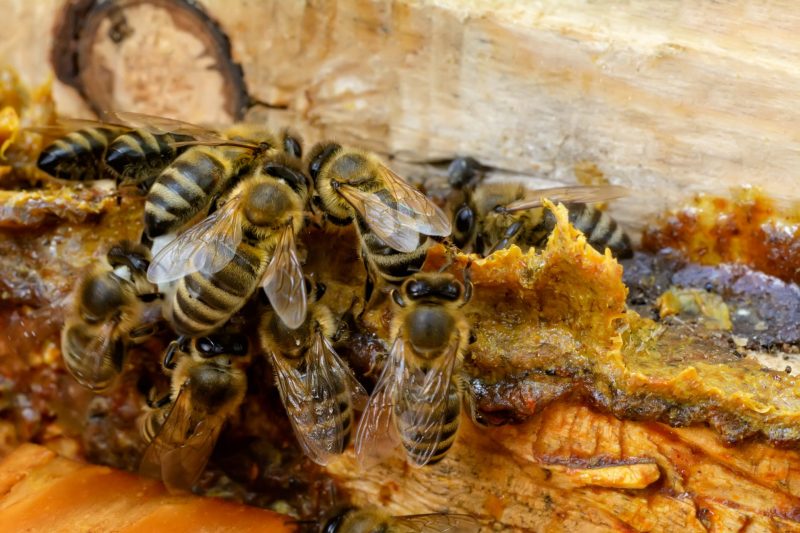How to Identify Propolis… and What Next?
Beekeepers sometimes are unsure whether they are correctly identifying propolis in the hive and whether they are accurately distinguishing it from wax. Below, I will quote a discussion from a social media platform where I provide some tips:
BEEKEEPER 1: Next year, I must start collecting propolis. I’m just not quite sure yet how to distinguish it from wax – I need to educate myself on this subject during the winter.
MIŁOSZ GÓRECKI: The best way is to collect some of what you think is propolis, dissolve it in spirit (for 2 days), strain the resulting tincture (good for various ailments) and examine what remains undissolved. Everything that did not dissolve is NOT propolis.
BEEKEEPER 1: That is a neat tip. Extremely simple and logical, yet you have to hear it from someone.
MIŁOSZ GÓRECKI: Tip no. 2: Raw propolis has commercial value if at least 50% (by weight) of it dissolves in spirit. Ideal is the one from which only a yellowish suspension of microscopic wax particles remains after dissolving.
BEEKEEPER 2: And how to separate propolis from impurities without dissolving it in spirit?
MIŁOSZ GÓRECKI: For a small amount, it’s best to sort it manually.
For a large amount, the following method of separation in COLD water is good:
1) The raw material must not be clumped; if it is – it needs to be crushed.
2) Then throw it into a sufficiently large container with cold water, stir, wait for everything to soak and then what settled to the bottom should be propolis with about 55% solubility in ethanol.
What floats is usually wax, wood, and elements of bee exoskeletons, and in this, there is still about 5% of propolis.
3) What remains at the bottom (i.e., propolis) must be well dried – otherwise, it will mold. The moisture in a package of propolis should not exceed 70%. Done.
The separation is not 100% and there are also some losses on the suspension of fine propolis dust floating in the water. But no method has 100% efficiency, and this one does not harm the medicinal properties of propolis. Under no circumstances should propolis be treated with high temperature to melt out the wax. High temperature destroys essential oils and halves the antibacterial properties of propolis.
BEEKEEPER 3: Could you suggest how to crush propolis into small pieces? I have a whole collection of propolis balls and want to crush them. Freeze and blend?
BEEKEEPER 4: I freeze and then crush the frozen ones, but I am eager to learn more from Mr. Miłosz, as he speaks interestingly.
MIŁOSZ GÓRECKI: Yes. It needs to be frozen and then crushed by any methods. In our company PROKIT, we have a special machine for this.
And again, one must remember about moisture. On the frozen kit, after removing it from the freezer, water from the air condenses. This also happens during grinding/crushing. Therefore – if the product is not to be subsequently rinsed in water – it needs to be well dried before being sealed in some airtight container.
